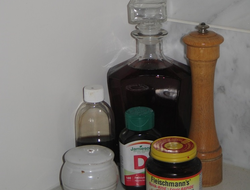Food additives in your food: Potential benefits, but at what cost?
Published: May 24, 2019
Food preparation, processing and preservation have depended upon the addition of various substances for decades if not centuries.
Salt, sugar, spices and herbs have contributed, and still do, to enhancing taste, texture, and food storage.
These, and other, natural food additives have been joined by a long list of synthetically produced food additives.
Today, the majority of processed foods and beverages require the use of food additives and residues may remain in the finished product. Even apples may be coated with protective wax.
Overtime concern about the safety of some food additives has led to the development of regulations and guidelines for use which vary globally.
In general, regulations consider the benefits to the consumer against potential risk (harms to health) that the proposed food additive poses based on research that is available at the time.
However, in some cases short term research indicates a food additive is safe, but over the long term research may identify less than desirable consequences of consuming certain food additives.
It is not only synthetic food additives that have been found to negatively affect health as salt and sugar, when over consumed also negatively affect health.
In Canada, the Health Canada website provides information on 15 different classes and hundreds of food additives permitted in foods in Canada.
In the US the Federal Department of Agriculture provides consumer information concerning the thousands of food additives permitted in foods in the US.
Different countries regulate food additives according to how food additives are defined.
The Canadian definition of food additives states “any substance which results or may be expected to result in it, or its by-products becoming part of/or affecting characteristics of a food”.
Substances that may qualify as food additives include those that “maintain its nutritive quality, enhance its keeping quality, make it attractive or aid in its processing, packaging or storage”.
However, not all substances that assist in food processing are considered food additives, but are termed food processing aids.
The Canadian definition does not include nutrients commonly found in foods such as amino acids, minerals, vitamins, spices, seasoning, flavouring preparations, and essential oils.
Components of food packaging and residues of drugs used to produce meat and poultry products which end up in food products may be considered as contaminants.
In the US food additives are defined as “any substance added to food” and include any substance used in production, processing, treatment, packaging, transportation, and...link to the full article to learn more.
References
1.
Gropper, S.S., Smith, J.L. & Groff, J.L. (2005). Advanced Nutrition and Human Metabolism (4thEd.). Belmont, CA: Thomson Wadsworth.
2.
Whitney, E. & Rady Rolfes, S. (2005). Understanding Nutrition. Belmont, CA: Thomson Wadsworth
3.
5.
Food Additives (2005) FNH 200, University of British Columbia

